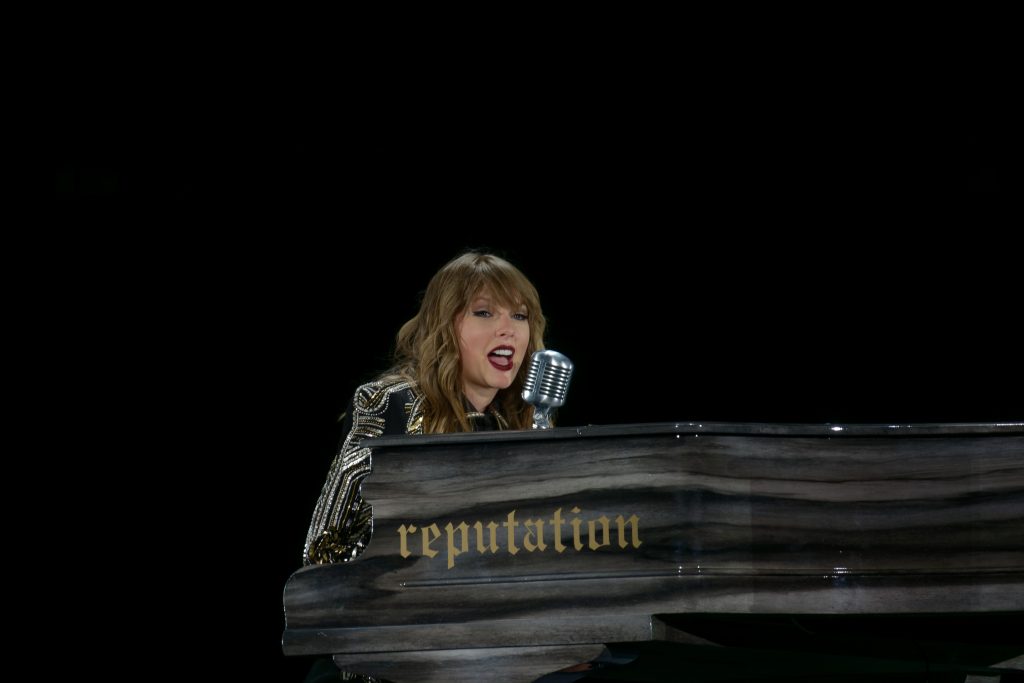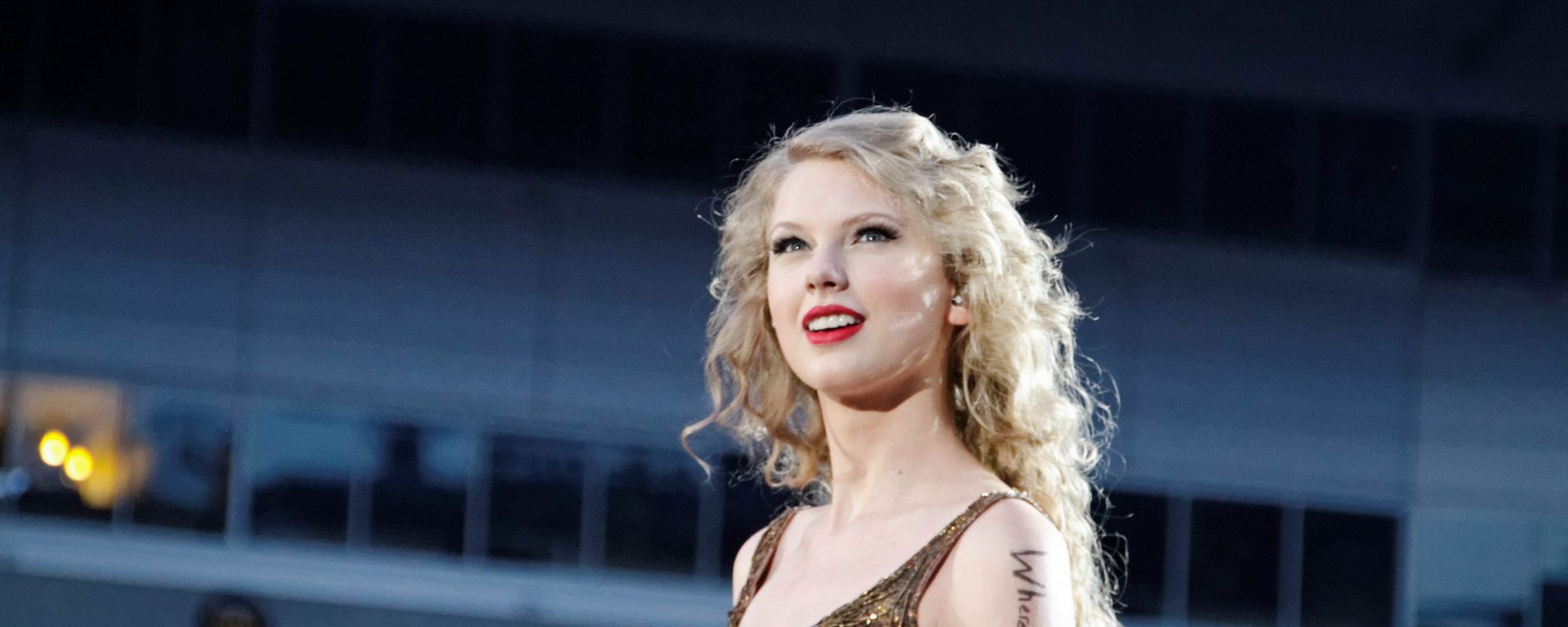… Ready for It?
Ten Studio Albums. Five Tours. Two Re-Recordings. One Massive Fanbase. We know all too well that Taylor Swift is the pinnacle of success for the music industry. Spanning multiple genres from country to pop and even some folk(lore), Taylor Swift has accomplished a lot in her first 32 years of life. But what’s gotten her to this level of recognition?
Some say it’s her songs. Some say it’s her stage presence. Others say it’s her re-recordings. Taylor Swift says it could be her songs, “with a catchy hook and an intensely cathartic bridge section.” Call it what you want, I say her level of recognition comes from her fearless team of lawyers registering her trademarks.

Treacherous Trademarks
Trademarks are words, phrases, symbols, or devices that help distinguish your goods from other goods. You don’t have to register trademarks with the United States Patent and Trademark Office (USPTO) to own your trademark. However, registering your trademark with the USPTO provides more legal protection for your mark.
Federally registered trademarks give trademark owners the ability to use the “®” symbol after the trademark. It also gives owners the right to bring lawsuits regarding the trademark. Federal registration gives trademark owners the legal presumption that they own the trademark. This can help save money because it is often costly to prove who owns a trademark if it is not registered.
Trademark applications can often be rejected if there is a likelihood consumers could get confused with a similar, registered (or unregistered) mark associated to similar goods. For example, the convenience store, 7-Eleven, recently sued another convenience store, Super-7 for using a mark that was strikingly similar to theirs. There was a high likelihood consumers would be confused because of the strong similarity between the marks (i.e. 7-Eleven and Super-7) and services (i.e. convenience store). Registering trademarks does not render your mark untouchable from future, similar marks but it will protect you from similar marks with similar goods and services, especially if the mark is unregistered.
Trademark applications are required to categorize their goods and services into classes. These classes are what helps the USPTO figure out if there’s similarity with the goods and services between marks.

Begin Again
In 2019, Taylor Swift announced she would be re-releasing her albums so she could own a version of the masters to all of her songs. As the copyright owner to her songs, she has the right to create derivatives of all of her songs, control their usage, and bar others from doing so. This means she can re-record her songs and distribute them all over again under her ownership.
Before releasing her albums and re-recordings, Swift’s lawyers register trademarks for the new albums to help protect her work and any products affiliated with her albums. It gives Swift extra protection if she ever needed to go to court. Even though the re-recorded album names are the same (so far) with the addition of “(Taylor’s Version)” – the addition renders it a new mark which means it must be registered.
Registering the re-releases for Red (Taylor’s Version) and Fearless (Taylor’s Version) seemed to be a walk in the park, but the registration for Speak Now (Taylor’s Version) has been a more delicate situation. The trademark for Swift’s original Speak Now album is still active. However, OnePlus, a consumer electronics manufacturer, came out of the woods and applied for trademark registration for Speak Now, a voice activated remote control, on February 3, 2021.
Eight days later, Swift’s team filed their trademark registration for Speak Now (Taylor’s Version). Typically, it’s first come first serve when it comes to registering trademarks. So what happened to the trademark application for Speak Now (Taylor’s Version)?
Tell Me Why
The USPTO approved the OnePlus trademark application with no mention of Swift’s previous Speak Now trademark. Like salt in the wound, the USPTO did not approve the trademark for Speak Now (Taylor’s Version) and cited it was too similar to the OnePlus trademark and Swift’s original Speak Now album. It appears the USPTO had used a very different style of logic for each trademark application. While trademark confusion is nothing new to the USPTO, it seems something got lost in translation and the USPTO should have compared the OnePlus trademark to the trademark of Swift’s original album in the first place.

Should’ve Said No
The USPTO stated in the Speak Now (Taylor’s Version) rejection that it was too similar to the OnePlus trademark and Swift’s original album because they all contained the mark Speak Now. This logic should have rejected the OnePlus trademark in the first place because both Swift’s original album and the OnePlus product have the mark Speak Now.
The examiner for the OnePlus application stated that no conflicting marks were found. Typically, the USPTO is not one to say “I Forgot that You Existed” to existing trademarks. However, it seems that the OnePlus application was a lucky one during its initial registration by not comparing it to Swift’s original trademark.
Happy, Free, Confused
Swift’s team is now arguing for their new mark against the USPTO with two main arguments for the likelihood of confusion refusal. First, they are arguing that if the OnePlus trademark did not get refused with the existence of Swift’s original album, Speak Now (Taylor’s Version) should not get refused. Second, they argue that Speak Now (Taylor’s Version) is different in sight, sound, meaning, and commercial impression. All these factors help make Speak Now (Taylor’s Version) less likely to suffer from consumer confusion.
Swift’s team is specifically arguing that sometimes, to avoid confusion, trademark applicants will add or delete words from their marks to gain approval. This is exactly what Swift has done by adding (Taylor’s Version) to the end of her re-releases. It helps listeners like me choose which album to play because (Taylor’s Version) lets me know that she owns that album. Long story short, the team is simply highlighting that the mark and good associated with Speak Now (Taylor’s Version) are different from the mark and good associated with the OnePlus trademark.

The Story of US(PTO)
If the USPTO doesn’t accept Swift’s argument, Swift’s team has three more options. The most likely options are to appeal to the examiner assigned to the application or appeal to the Trademark Trial and Appeal Board (TTAB) for an in-depth review of the application. Alternatively, they can alter their application now and drop everything that conflicts.
If Swift’s team removes the smartphone and smartphone items (i.e. a phone case associated with Swift’s re-release) from the goods listed in their application, there wouldn’t be any similar goods between the trademarks. The USPTO would likely approve Speak Now (Taylor’s Version) in this situation. It would surely take away the pain of having to wait for Speak Now (Taylor’s Version), but it also means Swift couldn’t release smartphone cases associated with this re-release.
Don’t Be Afraid, We’ll Make it Out of This Mess
Although the Speak Now (Taylor’s Version) trademark application was suspended earlier this year, there is still hope Swift will obtain this trademark. The USPTO suspended the Speak Now (Taylor’s Version) application on the basis that it overlapped with the OnePlus trademark in two classes of goods and services. The USPTO recently issued an office action to OnePlus stating that they were refusing the portion of their trademark relating to smartphones and smartphone accessories because it overlapped with Swift’s original Speak Now album.
OnePlus had the opportunity to respond to this rejection but did not. So, on August 11, 2022, the USPTO officially amended the OnePlus trademark by removing the smartphone and smartphone accessories from the mark registration. The amended trademark was published for public opposition on September 20, 2022, which will likely follow with another appeal from Swift’s team to get the Speak Now (Taylor’s Version) trademark application approved. While this is just one step in the right direction for Swift’s end game, it may be a while until we see this album re-release.

Sayin’ It’s Gonna Be Alright
It was a cruel summer without any re-released albums, but it’s a worthwhile fight for Taylor Swift to get her trademarks registered. Speak Now (Taylor’s Version) is an important step in her journey to reclaim her music, but the wait is worth the inevitable state of grace Swift will have when she owns her songs. Trademarks may be a ruthless game and slow down album releases but thankfully, Swift recently released her 10th studio album, Midnights, on October 21, 2022.

Ashton Duke
Senior Editor
Loyola University Chicago School of Law, JD 2024
